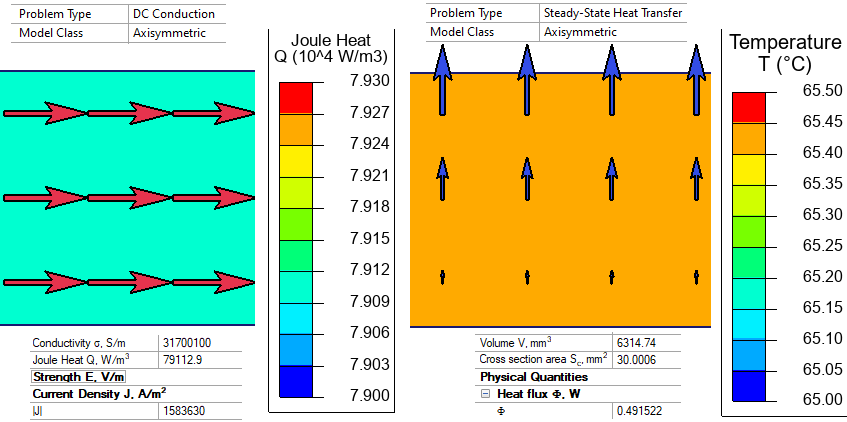Temperature dependent electrical resistance
QuickField simulation example
Electric current flows in the aluminum bus pipe. As a result of the thermal action of a current, the conductor heats up and its electrical conductivity changes.
Problem type
Axisymmetric multiphysics problem of DC Conduction coupled to Heat transfer.
Geometry
Given
Resistivity of aluminum ρ20° = 2.65e-8 Ohm*m, temperature coefficient of resistivity α = 0.00429 1/°C.
Current I = 1 kA;
Convection coefficient 5 W/K-m², ambient air temperature +20°C.
Task
Calculate the conductor temperature.
Solution
The conductor resistance depends on the temperature as:
ρ = ρ20° · ( 1 + α·( T - 20° ) ).
DC Conduction problem allows us to specify the electrical conductivity vs. temperature dependency and the temperature of the conductor. The problem solving is an iterative process:
- Set up the initial temperature of the conductor +20°C.
- Simulate DC conduction problem and calculate the Joule heat.
- Simulate the coupled heat transfer problem and calculate the conductor temperature.
Then correct the conductor temperature in DC conduction problem and repeat the steps 2 and 3 till the temperature value converges.
Results
The steady state temperature of the aluminum conductor is 66°C.

- Video: Temperature dependent electrical resistance of the busbar. Watch on YouTube.
- Download simulation files (files may be viewed using any QuickField Edition).